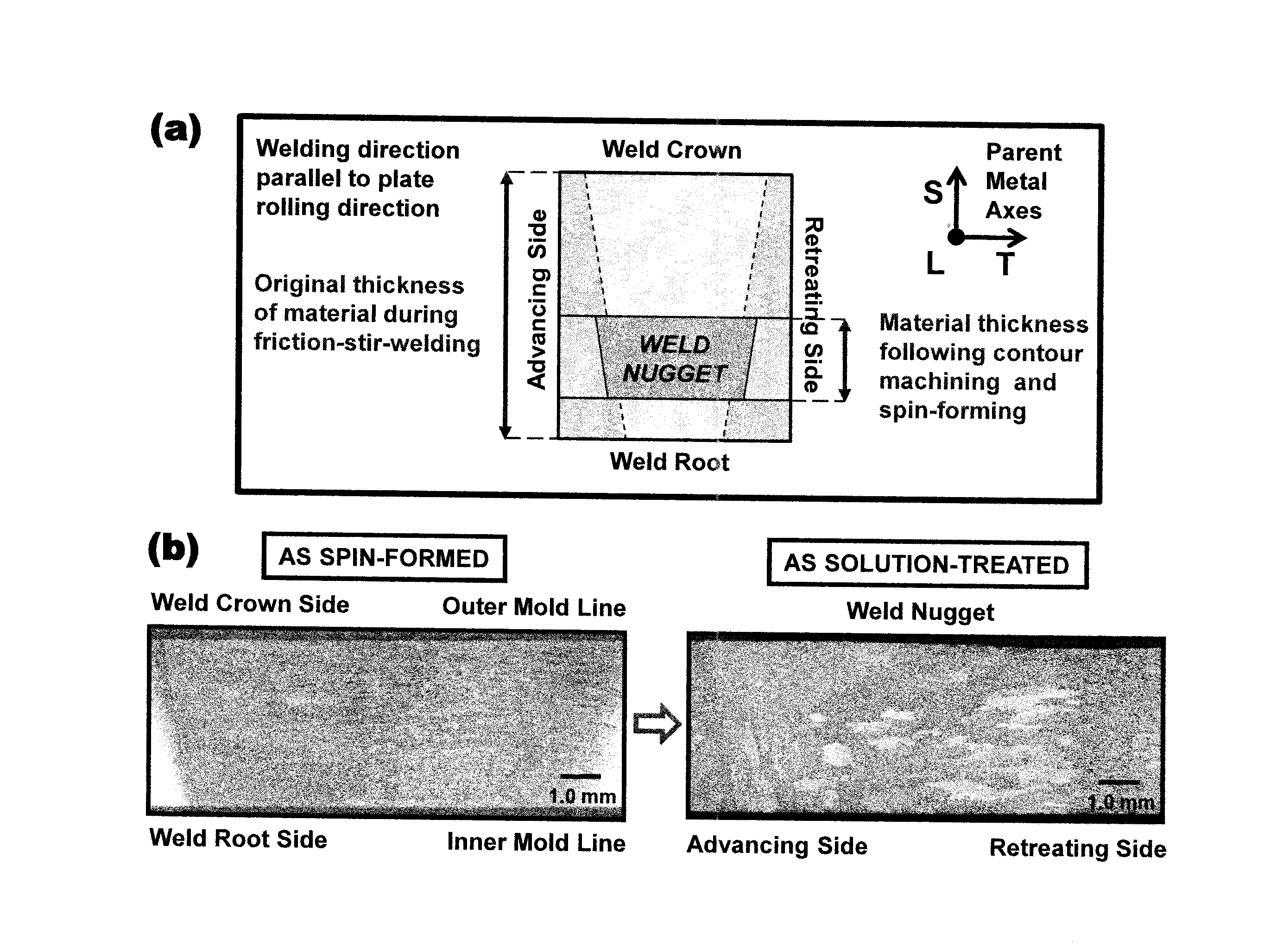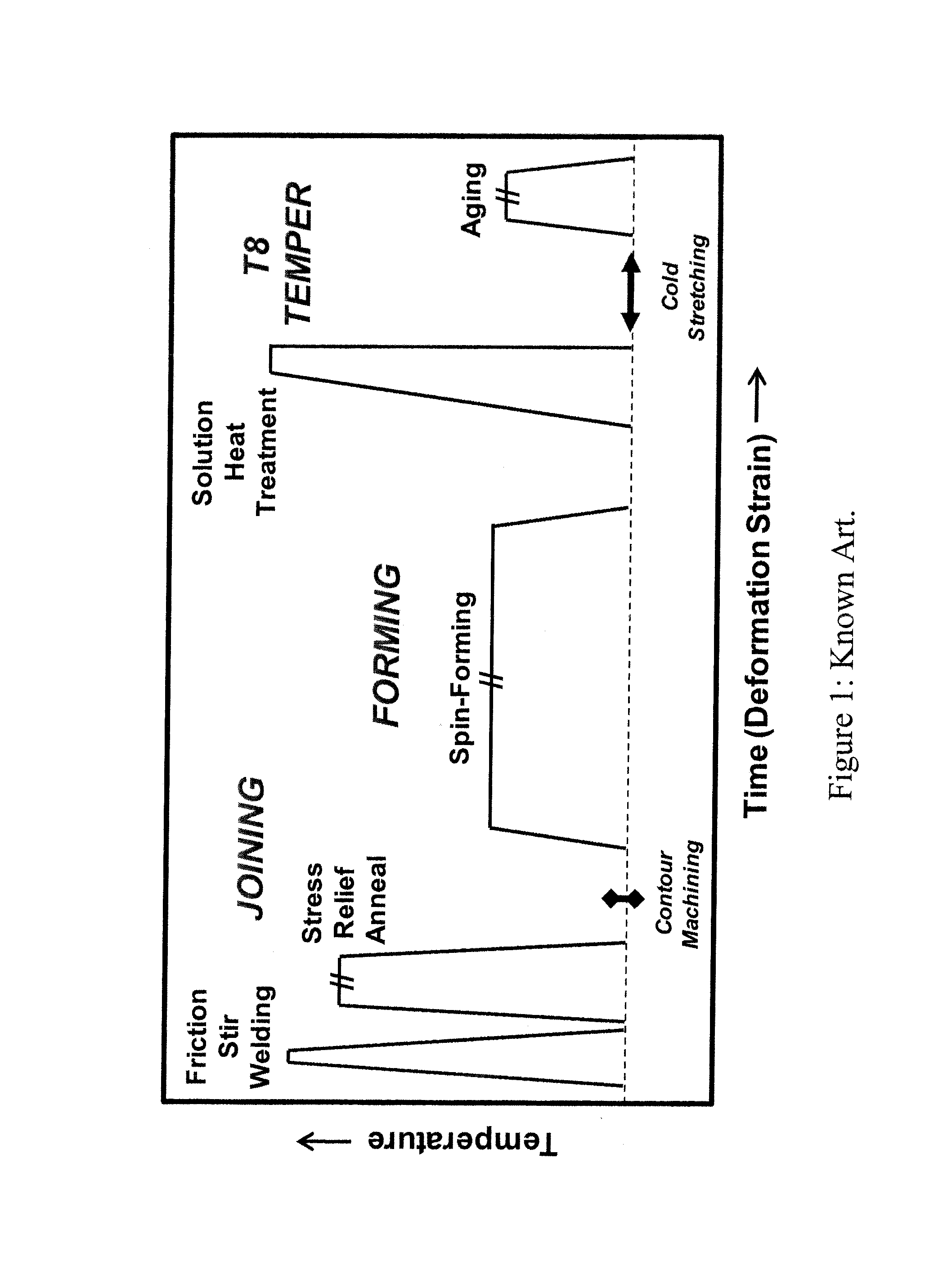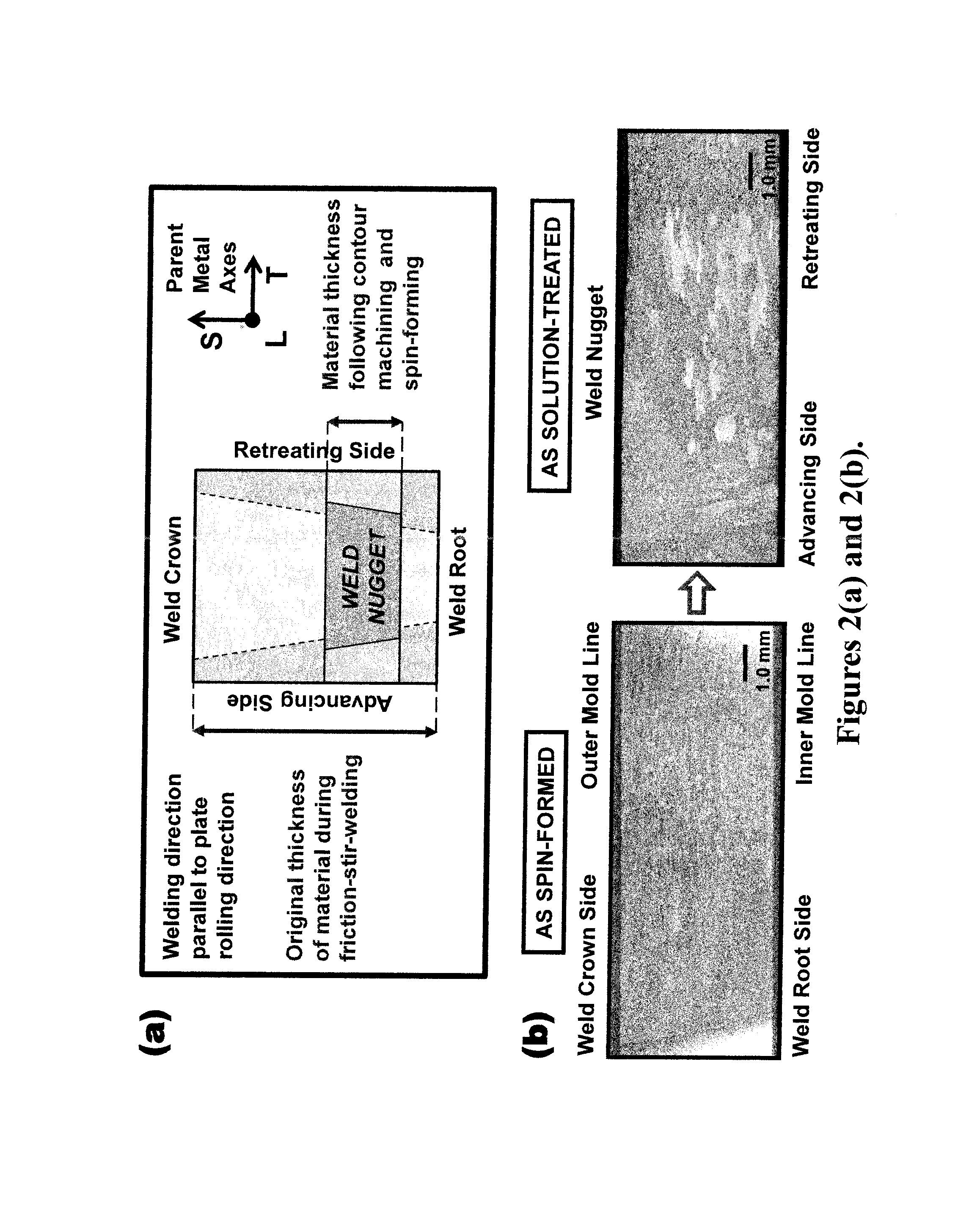Abnormal grain growth suppression in aluminum alloys
a technology of aluminum alloy and grain growth suppression, which is applied in the direction of furnaces, heat treatment equipment, manufacturing tools, etc., can solve the problems of abnormal grains, notch-sensitive mechanical properties, reduced strength, fracture toughness, etc., and achieve good strength and ductility
- Summary
- Abstract
- Description
- Claims
- Application Information
AI Technical Summary
Benefits of technology
Problems solved by technology
Method used
Image
Examples
example
[0028]This example further demonstrates the effectiveness of using IAT to suppress AGG.
[0029]Investigation of the (sub)grain structure was performed using standard Optical Metallography (OM), and Electron Back-Scattered Diffraction (EBSD) analytical techniques. Metallurgical analyses were conducted on the same samples for each of the analytical techniques. Traverses between the Advancing / Root and Retreating / Crown intersections were employed, i.e. ‘AR to RC’ traverses. The OM data was collected using two standard specimen preparation / imaging mode combinations; Keller's chemical etching / bright field (K / BF) images and Barker's electro-chemical etching / cross-polarized (B / XP) images. The smaller areas for each EBSD data set contained within were 250 μm×500 μm and comprised of 900-1400 (sub)grains, depending on dimensions. The Mean Linear Intercept (MLI) methodology used was in conformance with ASTM E112 procedures for the OM data and ASTM E2627 for the EBSD data. Boundaries with misorien...
PUM
| Property | Measurement | Unit |
|---|---|---|
| temperature | aaaaa | aaaaa |
| solvus temperature | aaaaa | aaaaa |
| temperature | aaaaa | aaaaa |
Abstract
Description
Claims
Application Information
 Login to View More
Login to View More - R&D
- Intellectual Property
- Life Sciences
- Materials
- Tech Scout
- Unparalleled Data Quality
- Higher Quality Content
- 60% Fewer Hallucinations
Browse by: Latest US Patents, China's latest patents, Technical Efficacy Thesaurus, Application Domain, Technology Topic, Popular Technical Reports.
© 2025 PatSnap. All rights reserved.Legal|Privacy policy|Modern Slavery Act Transparency Statement|Sitemap|About US| Contact US: help@patsnap.com



